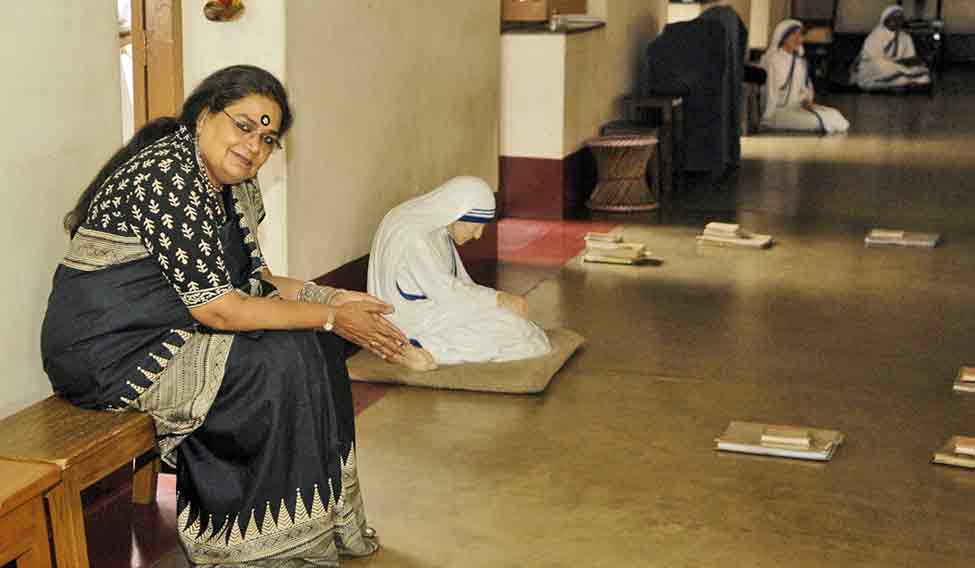It has been a real blessing to have known Mother Teresa for 47 years. The first time I met her, she was not the person worshipped by people around the world, but a simple nun. I met her at a homoeopathy clinic, a place she also frequented. In the years that followed, I got to love her, feel her, know her, smile with her, walk with her and sing for her. But above all, I experienced her immense passion and strength, dignity and grace and, of course, her simplicity.
I found myself getting closer to her, working with her and for her. She set out tasks for me that included gathering food and clothes for the poor. As simple as this sounds, Mother had one rule: Don’t tell anyone what you were doing or why you were doing it. This was to keep the volunteers grounded and embrace the true motive behind the work.
The material we collected came from everyone we knew and met every day. The exercise of collecting clothes or food did not affect my ego. I marvelled at the fact that Mother was able to do a lot of things without much talking.
But there was one task that I found hard to follow up. Mother had asked me to carry leftovers from wedding parties that I had attended and to hand it over to her. This was particularly difficult as she expected me not to tell people why I had taken the food. But I did it anyway, with Mother's words ringing in my ears: Charity is never charity if it is done with declaration.
I have another touching story to tell. Many years ago, I met her at an airport and noticed the sweater she wore. It was badly stitched, partly torn and patched. This pained me. “Mother, could you not get a new one?” I asked, to which she replied, “Usha, if I don’t wear these, how would I be able convince the world that I live with the poorest of the poor?” Stunned, I realised that here was a person who practised what she preached.
She often said that it was not money that she needed, but the time and commitment of people. She believed that it was easy for one to take out gold from one's pocket, but commitment and time are costlier commodities. And that is what she sought from me.
One day, as she was coming to my studio in Entally, Calcutta, she suddenly stopped the car and got out, seeing a man lying on the pavement. Without checking whether the man was drunk or not, she took him to hospital.
I was invited for her beatification. It was a wonderful experience. This time when the Vatican sent me an invitation for her canonisation, I was thrilled. My son will accompany me on this trip. I will be performing at a ceremony there, on September 3, the eve of her canonisation.
As nerve-racking as it is going to be, I am equally excited about this opportunity. Earlier, Indian cultural representation on an international platform involved classical performers like Ravi Shankar, Zakir Hussain or Amjad Ali Khan. Kathakali and Bharatnatyam were considered to be the Indian cultural heritage. But, for me, Indian culture does not stop at that. I will do what I do best and perform with an orchestra for my beloved Mother.
She was already a saint for us when she was alive. But yes, the formality and international recognition are required. So the canonisation is historic. My association with Mother Teresa has been something I will always cherish. She was one of the greatest of the last century and no one has touched lives the way she has. Anybody who met her would understand the person she was.
Sometimes, when I step out of my home, I remember that I walk on the same road as Mother used to. And that gives me a sense of satisfaction.
As told to Rabi Banerjee






